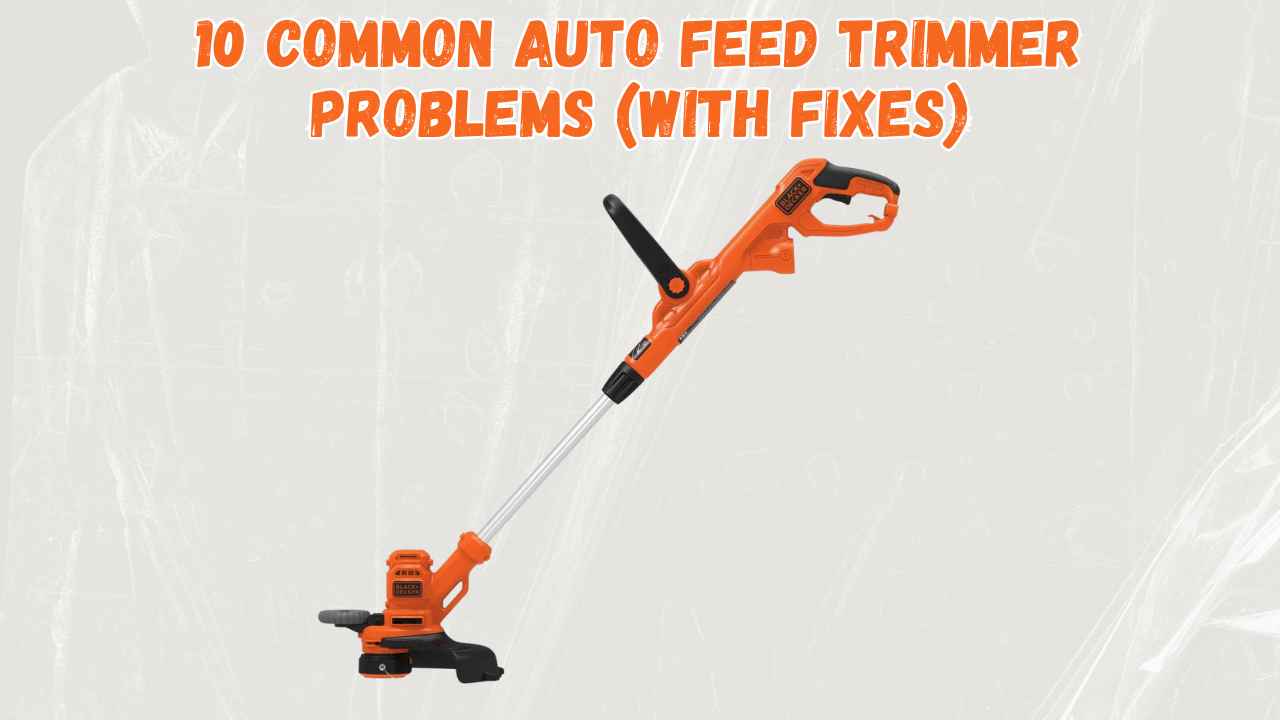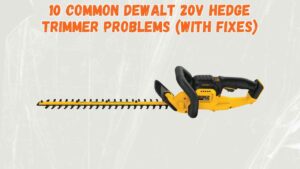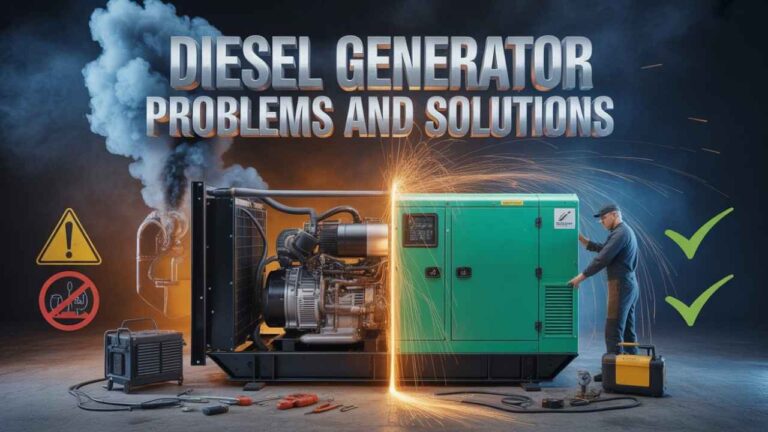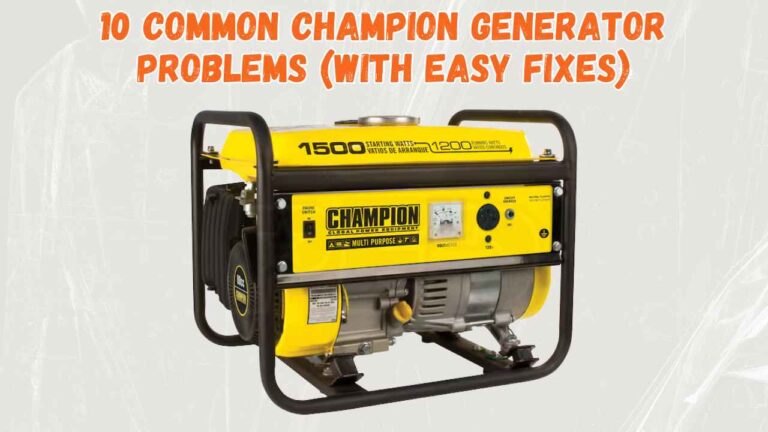Struggling with your auto feed trimmer? You’re not alone! Auto feed trimmer problems can be frustrating, from line jamming to uneven feeding.
The good news? Most of these issues have simple fixes.
In this guide, we’ll break down 10 common problems and show you how to get your trimmer back in perfect working condition with ease.
Auto Feed Trimmer Problems (Short Overview)
Auto feed trimmer problems usually happen when the line gets jammed, tangled, or doesn’t advance properly.
Worn-out parts, incorrect line size, or dirt buildup can also cause trouble. Don’t worry—most of these issues can be fixed quickly with a little care and maintenance.
Keep your trimmer clean and check the spool regularly to avoid these hassles!
Read 10 Common Problems With Fixes In Easy Ways…
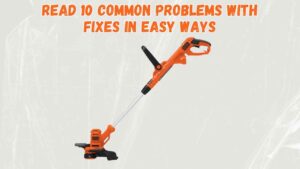
1. Line Not Advancing
A common issue with auto-feed trimmers is when the line does not advance properly, causing interruptions while trimming.
Causes:
- The line is tangled or not wound evenly on the spool.
- The spool is jammed or stuck, preventing smooth line release.
- Dirt, debris, or wear inside the trimmer head.
Fixes:
- Check and rewind the line on the spool neatly, following the manufacturer’s instructions.
- Clean the trimmer head to remove dirt or blockages.
- Inspect the spool and replace it if damaged or worn out.
2. Line Gets Jammed
One common issue with auto-feed trimmers is the line getting jammed, causing the trimmer to stop working efficiently.
Causes:
- Tangled or improperly wound trimmer line
- Buildup of debris in the spool area
- Using the wrong line size for your trimmer
Fixes:
- Remove the spool and untangle or rewind the line properly
- Clean the spool area to remove any dirt or debris
- Always use the recommended line size and type for your trimmer model
3. Trimmer Overheating
Overheating is a common issue with auto-feed trimmers, often caused by prolonged use, clogged vents, or lack of proper maintenance.
When the motor runs too hot, it can reduce the trimmer’s performance and even lead to permanent damage if not addressed promptly.
Causes of Overheating
- Continuous use without breaks.
- Blocked air vents restricting airflow.
- Dirt, grass, or debris buildup around the motor.
Fixes for Overheating
- Take regular breaks to let the motor cool down.
- Clean the air vents and remove any blockages.
- Inspect and clean your trimmer regularly to ensure smooth operation.
4. Incorrect Line Size
Using the wrong line size in an auto-feed trimmer can cause major issues. If the line is too thick, it might jam the spool or prevent the line from feeding properly.
On the other hand, a line that’s too thin can break easily, slowing down your work and causing constant replacements.
Cause
The incorrect line size is often due to using a line that doesn’t match the manufacturer’s specifications.
Many users overlook the recommended size for their trimmer model, leading to performance issues.
Fix
Check the user manual or the label on your trimmer to confirm the correct line size. Purchase a replacement line that matches the specifications exactly.
If you’re unsure, consult the manufacturer or bring your trimmer to a store for guidance. Using the right line size will ensure smooth operation and extend the life of your trimmer.
Read Also:
Dewalt 20v hedge trimmer problems
5. Tangled Spool Line
One common issue with auto-feed trimmers is a tangled spool line. This happens when the line inside the spool gets twisted or jammed, disrupting the smooth feeding mechanism.
Causes
Tangles often occur due to improper winding of the line, overloading the spool, or using the wrong type of line for your trimmer.
Fixes
To resolve this, remove the spool and carefully untangle the line.
Ensure you’re using the correct line size recommended by the manufacturer and wind it tightly and evenly.
Regularly cleaning the spool area can also prevent future tangles.
6. Uneven Line Cutting
Dealing with uneven line cutting is a common issue with auto-feed trimmers.
This happens when the trimmer line is fed unevenly, leaving one side longer than the other and causing inconsistent results while trimming.
Uneven lines not only affect performance but can also strain the motor over time.
Causes
- Worn-out spool or faulty mechanism disrupting proper line feed.
- Incorrectly installed trimmer line or low-quality line material.
- Debris buildup inside the spool housing causing jams.
Fixes
- Check and replace the spool if it’s damaged or worn.
- Ensure the trimmer line is installed correctly and use high-quality, compatible materials.
- Clean the spool housing regularly to prevent debris buildup and maintain smooth operation.
7. Broken Spool Cap
A broken spool cap is a common issue with auto-feed trimmers that can disrupt their performance.
The spool cap holds the line in place, and when it’s damaged, the line may not feed properly, leading to uneven trimming or complete stoppage.
Causes
Spool caps often break due to wear and tear, accidental drops, or using the trimmer on rough surfaces.
Fixes
To fix this, inspect the spool cap for visible cracks or damage.
Replace it with a compatible new cap, easily available at hardware stores. Regular maintenance and careful handling can prevent future breakage.
8. Dirt Buildup Inside
One common issue with auto feed trimmers is dirt and debris accumulating inside the mechanism.
Causes
Dirt, grass clippings, and debris from trimming can get stuck inside the spool housing or feed mechanism, leading to blockages.
Moist conditions can worsen the problem by causing debris to stick more easily.
Fixes
To resolve this, disassemble the spool housing and clean out any dirt and debris using a brush or cloth.
For stubborn grime, use a mild cleaning solution. Make sure the spool is properly reassembled before use, and clean the trimmer regularly to avoid future issues.
9. Worn-Out Components
Worn-out components are one of the most common issues affecting the performance of auto-feed trimmers.
Causes
Continuous wear and tear, exposure to harsh conditions, or using incompatible replacement parts can cause these components to break down.
Fixes
Inspect the trimmer regularly and replace damaged parts like the spool or line as needed.
Using high-quality, compatible components ensures smoother operation and extends the lifespan of your trimmer.
10. Motor Losing Power
If your auto-feed trimmer’s motor is losing power, it can disrupt your workflow and make trimming inefficient.
Causes
- Clogged air filters restricting airflow.
- Worn-out spark plugs affecting performance.
- Low or failing battery in electric trimmers.
Fixes
- Clean or replace the air filters regularly.
- Check and replace spark plugs as needed.
- Ensure the battery is fully charged or replace it if it’s no longer holding a charge effectively.
FAQs
What is an auto-feed trimmer?
An auto-feed trimmer is a gardening tool that automatically advances the trimmer line as it wears down, eliminating the need for manual line adjustments.
How does the auto-feed mechanism work?
The mechanism works by utilizing a spring or centrifugal force to release more line as needed during operation.
Why is my auto-feed trimmer line not advancing?
This could be due to a jammed spool, incorrect line installation, or worn-out components in the auto-feed system.
Can I use any type of trimmer line in an auto-feed trimmer?
Not all trimmer lines are compatible; it’s essential to use the line type and size recommended by the manufacturer.
How often should I maintain my auto-feed trimmer?
Regular maintenance should be done after every few uses, including cleaning, inspecting the spool, and checking for wear and tear.

